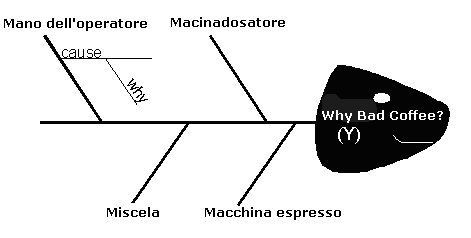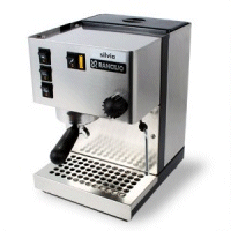
All well trained Six Sigma professionals know that variation is the root of all evil – at least with respect to the customer experience. I understand this all too well myself. I usually experience it when it is least appreciated – in the early morning.
Many nights I find myself up late programming some new feature on iSixSigma (yes, I do a bit of coding in addition to the many other hats I wear). Finishing a coding session at 3 or 4 a.m. leaves me a little bleary eyed in the morning after I drop my daughter off at school. It’s then that I want to enjoy a well deserved, full-bodied espresso that I can savor while perusing the Journal before my workday begins.
Unfortunately, my serene and enjoyable experience is all too often abruptly interrupted when I take my first sip and realize that it’s:
- Too hot
- Too cold
- Too bitter
- Too weak
- (Fill in the blank)
Starbucks – the epitome of standardized-yet-customizable coffee alternatives – should understand this better than anyone else, but I consistently find variation in my mochas from shop to shop and barista to barista. Recently I’ve been frequenting a local “mom and pop” haunt dubbed “Your Neighborhood Coffee House,” but find that without Sally (the quickest and most reliable barista I’ve experienced in years) it’s lacking in the consistency I require.
It shouldn’t be that hard to understand the factors involved in delivering consistently enjoyable espresso. Surely baristas can be trained to measure process variables and to control them within tolerances.
Last week I vacationed with my wife’s sister and family who live in Anchorage, Alaska (USA). Every morning my sister-in-law Laurel was kind enough to offer espressos. Four days into the trip I realized that I had yet to have a bad pour. Intrigued by the concept of coffee variation (or lack thereof), I decided to do a little research on the subject.
I learned that there are plenty of other coffee geeks in the world besides Kim Bruce (I still feel badly that Starbucks is closing your Torrefazione, Kim) – and now me – who care a great deal about their brew. I also learned that in contrast to the well-known “6Ms” (Machines, Methods, Materials, Measurements, Mother Nature and Manpower) that are used to categorize potential root causes of a problem on a fishbone diagram, the coffee geeks have their own categories called “four Ms” (in Italian):
- Mano dell’operatore (hand of the operator)
- Macinadosatore (grinder-doser)
- Miscela (blend)
- Macchina espresso (espresso machine).

Although your local Starbucks barista may lack the knowledge and expertise of their Italian counterparts, myriad issues should be racing through their minds while pouring your espresso: blend quality, grind fineness and volume, distribution, tamp, water temperature and pressure, extraction time and volume, blonding, channeling, crema…and we haven’t even begun to talk about what the barista does with the milk and foam (or what Laurel and her husband Ryan refer to as “fluff”)!
 All of this newfound knowledge led me to think one thing: design of experiments (of course). I’m hoping to write my own standard operating procedure for the ultimate espresso and someday begin the experiment with my very own “Miss Silvia” (see picture, right) soon. The product description has already started me thinking about what factors to test: Keep in mind that time, temperature and volume of the shot are important factors for a good espresso… Miss Silvia also offers a place on top for pre-heating the cups for a better tasting espresso.
All of this newfound knowledge led me to think one thing: design of experiments (of course). I’m hoping to write my own standard operating procedure for the ultimate espresso and someday begin the experiment with my very own “Miss Silvia” (see picture, right) soon. The product description has already started me thinking about what factors to test: Keep in mind that time, temperature and volume of the shot are important factors for a good espresso… Miss Silvia also offers a place on top for pre-heating the cups for a better tasting espresso.
Six Sigma espresso pours? Now that’s my idea of delighting the customer. Bottom’s up.
Related Links:
- Rancilio Silvia (aka “Miss Silvia”)
- Procedure for Slashing Miss Silvia Warm-up Times by Over 50%
- Perfecting the Naked Extraction
- CoffeeGeeks.com